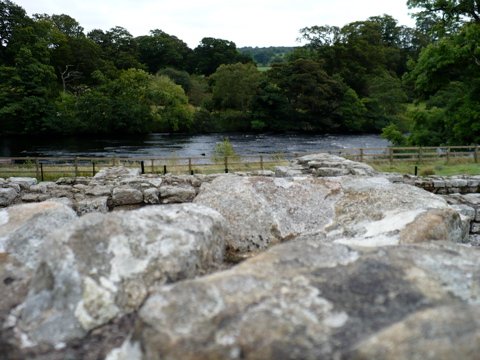
Leaving York, I took the train north to Newcastle, where I took another train heading west to Hexham, a small town in Northumberland. As nice as Hexham was, I’m sorry to say that I wasn’t there during business hours and so didn’t see much of it. Which is a shame, because there’s a fine 12th century abbey and several other medieval buildings there (I did get to see the railway station, of course, apparently one of the oldest in the world). But that was ok, because I was only there to see Hadrian’s Wall, which runs just north of Hexham on its way from coast to coast.
On my first day, I only had time to see one site, so I chose Chesters. Between the 2nd (almost immediately after the Wall was built, in fact) and late 4th centuries it was a Roman cavalry fortress called Cilurnum, sited where the Wall crossed the North Tyne.

There’s a small museum on site — really, just a couple of rooms stuffed full of old Roman statues (most of them not from Chesters, but from elsewhere along the wall). This is Neptune, possibly representing the North Tyne.

Possibly the goddess Coventina in triplicate, from a temple at Carrawbugh. The execution is crude compared to the wonderful things I later saw in Rome itself. But really, that just adds to their charm. (Yes, I’m a soft touch when it comes to classical art.)

From the same place and dedicated to the same goddess, by Titus D. Cosconianus, prefect of the First Cohort of Batavians.

A brick (sorry, ‘building stone’) with a boar carved into it.
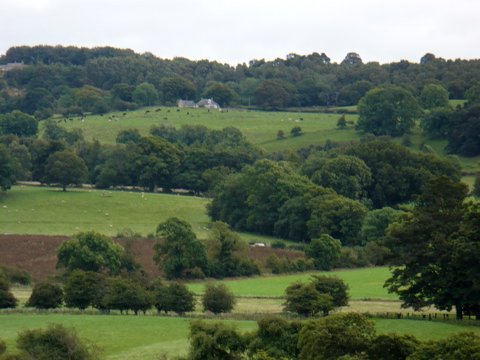
The countryside around Chesters.

A row of barracks — those walls are about a foot high or so. The great thing about the ruins along the Wall is that you can clamber over just about all of them — try doing that in the Roman forum!
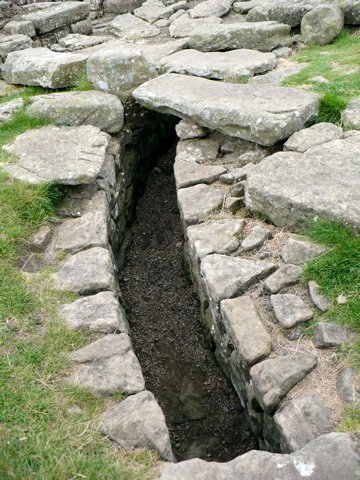
By their drainage systems shall ye know them.
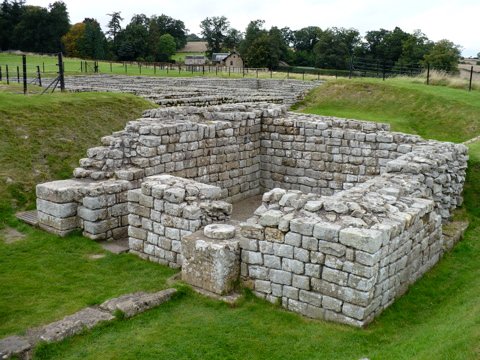
One of the guardrooms beside the main east gate.

A hypocaust underneath one of the rooms in the commandant’s house, that is a raised floor, under which hot air was passed to heat the room. One thing I quickly came to appreciate after scrambling over a ruined fort or two is just how seriously the Roman army took its creature comforts.

For example, this is the (well-preserved) bath house, which must have been the most complex building on the site, what with the frigidarium, caldarium, tepidarium … but I suppose such luxury was a necessity in such a cold, wet climate.
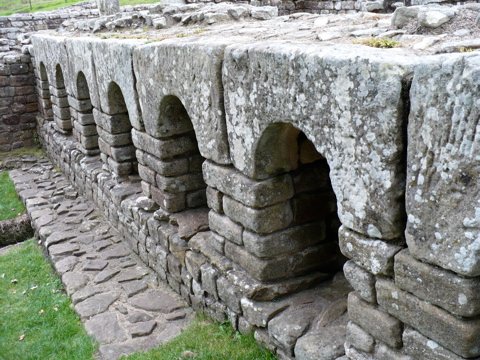
These niches are in the changing room. The obvious thought is that they were lockers for clothes, but apparently there’s no evidence that doors could have been fitted to them. Instead, they probably held statues of deities, representing the days of the week (as there are seven niches).
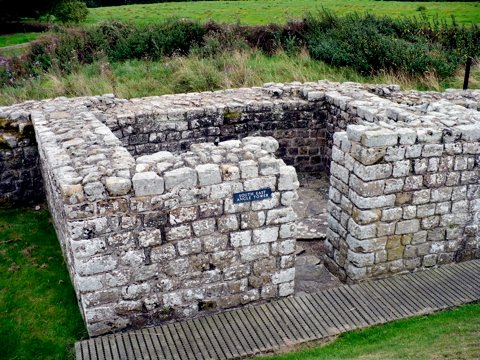
The south-east angle tower (a fancy way of saying it’s in the corner of the fort). That doorway is surprisingly narrow. I wouldn’t say I’m particularly broad-shouldered, but the soldiers who used the tower must have been less so than me. And they were wearing armour, so it still would have been a tight fit. Or else they squeezed in sideways!

The North Tyne, which is swift and cold (it looked it, anyway!) The Romans built a big bridge here at Chesters, some of which still survives.

Another view across the rolling hills.
![]() This work is licensed under a Creative Commons Attribution-NonCommercial-NoDerivatives 4.0 International License.
Permissions beyond the scope of this license may be available at http://airminded.org/copyright/.
This work is licensed under a Creative Commons Attribution-NonCommercial-NoDerivatives 4.0 International License.
Permissions beyond the scope of this license may be available at http://airminded.org/copyright/.

Pingback: Airminded · Vindolanda and Housesteads